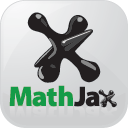Section 3.6 Frames
Consider the following dialogue:
- (1)
- Zoe: Can I borrow your old bike?
Noah: Sorry, I sold it.
Zoe: Oh, how much did you get for it?
How does Zoe know that Noah got something for the bike? She knows because Noah said that he sold it. The verb sell entails that there is somebody who sells and somebody who buys, and that some goods or services are exchanged for money. This is why, when Noah tells Zoe that he sold something, Zoe knows that it can be a relevant question to ask who bought it and and how much money they paid, even if buying or money had not been previously mentioned in the conversation.
Subsection What are frames?
The verb sell evokes what has been termed the COMMERCIAL TRANSACTION FRAME, a complex mental schema that contains a SELLER, a BUYER, GOODS/SERVICES and MONEY, and the COMMERCIAL TRANSACTION FRAME does not make sense without these four participants – they are core elements of the frame. We can think of frame elements as roles or as slots in a schema – as soon as the frame is activated in our mind, we may want to identify the particular fillers of these slots by asking relevant questions like the one A asks: “how much did you get for it?”
Frames structure our shared knowledge, beliefs and patterns of practice, and this common ground is culture- (or sub-culture) specific. In Europe, if someone talks about planning their seven-year-old daughter’s birthday party, relevant questions to ask may be “should I bake a cake?” or “what can I get her?”, because it is a shared assumption that there is going to be cake (with candles, usually) and that the guests – for there are, of course, going to be guests – are going to bring presents. In other cultures, birthday parties may look quite different. (These default assumptions, the fillers of the core elements of the birthday frame, can be overwritten – there could be ice-cream instead, for instance. The important point is that frame elements define what relevant questions are, that some fillers only need to be spelled out if they diverge from the default.)
Subsection Underspecification
A central idea in frame semantics is that linguistic expressions are semantically underspecified and that interpretation involves adding background knowledge organized in frames to lexical meaning. Consider the English word mug, for instance. A mug is “a drinking vessel, frequently cylindrical (and now usually with a handle), generally used without a saucer” (definition from the Oxford English Dictionary) – but what is it made of, what exactly does it look like? If previous discourse has activated the pub frame or the beer garden frame (e.g. because someone has mentioned Guinness or pretzels), your mug is likely to be made of glass (see Figure 3.6.1). If the café frame is activated (e.g. because you have just decided to have coffee somewhere), the mug that comes to your mind first is more likely to be of china or pottery (see Figure 3.6.2).

a mug of beer standing on top of a coaster, next to a rack on which two rows of pretzels are hanging, on a wooden table

A light brown mug with a symbol of a heart outlined on it, filled with tea, on a table next to some cookies and an orange-brown leaf
In Frame Semantics it is assumed that words are generally interpreted in terms of frames. It is even claimed that content words are uninterpretable without recourse to background frames. It is impossible to explain what Santa Clause is, for instance, without referring to Christmas and Christmas presents. Outside of these frames, Santa Clause just does not make any sense. In the same vein, it is impossible to understand what a syllable onset is unless you know about phonemes.
Note that frame elements are entities on the conceptual level, i.e. on the level of meaning. It is impossible to think about buying without assuming the existence of a buyer and a seller, and of goods and money, but it is possible to speak about a buying event without referring to all these roles. (In our dialogue above, for instance, the BUYER is not mentioned, but it is understood that a BUYER exists.)
Nonetheless, frames define which linguistic expressions or lexical units are likely to be used. Thus, a semantic frame assembles words into a semantic field – a set of words on the same topic. The meaning of a word is dependent partly on its relation to other words in the same semantic field – the OED mentions the fact that mugs are typically used without saucers to distinguish mugs from cups (presumably), and a mug is partly defined by its typical uses in a particular type of situation, e.g. in a café to drink tea or coffee from.
Meaning, then, is not reducible to features (cylindrical, no saucer), as we have already seen, and neither is it fully describable in terms of prototypes. Rather, lexical items have ranges of possible meanings and their interpretation in a particular instance depends on the context of use.
Subsection
CC-BY-NC-SA 4.0. Written by Kirsten Middeke, minor edits by Anatol Stefanowitsch.
